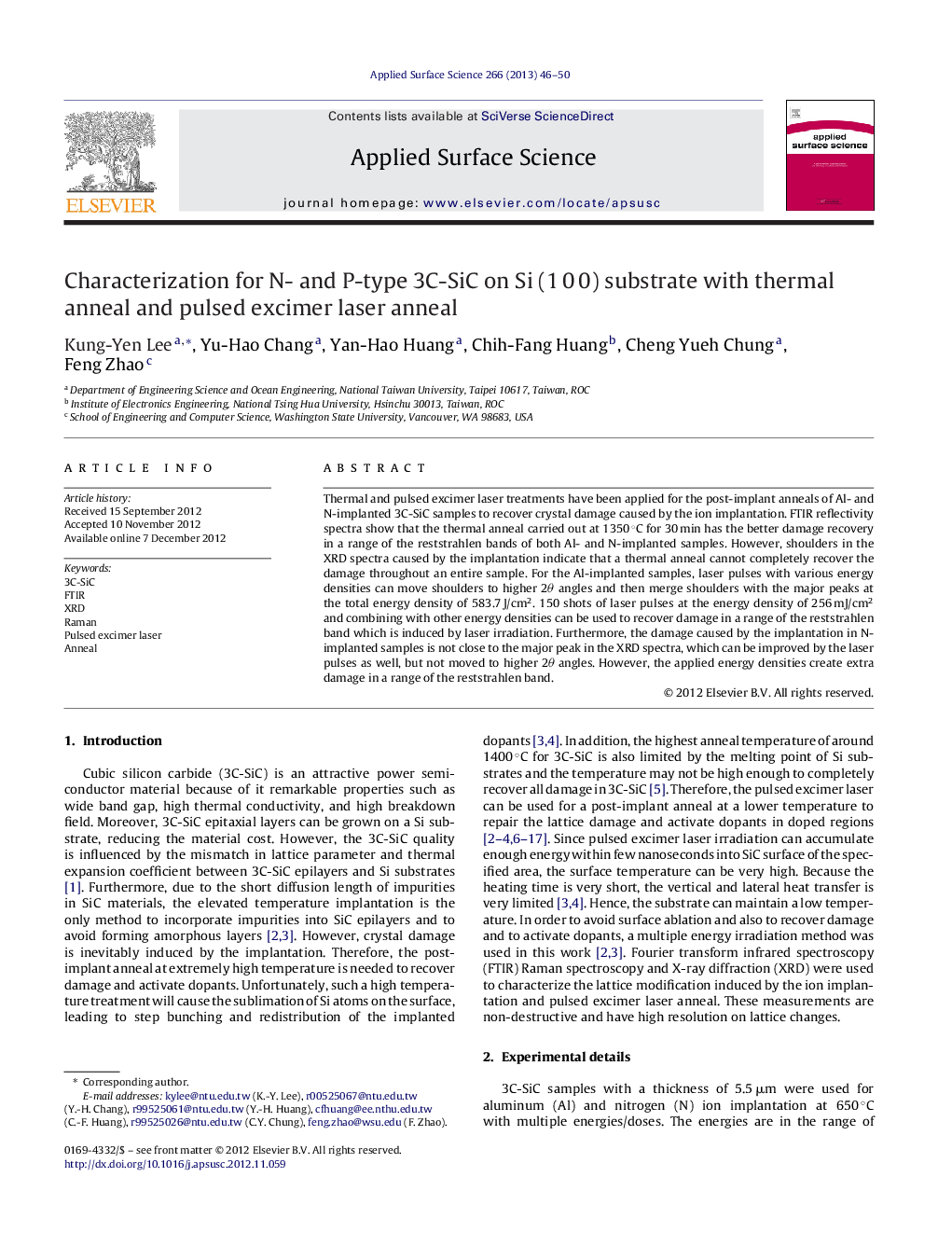| Article ID | Journal | Published Year | Pages | File Type |
|---|---|---|---|---|
| 5363818 | Applied Surface Science | 2013 | 5 Pages |
Thermal and pulsed excimer laser treatments have been applied for the post-implant anneals of Al- and N-implanted 3C-SiC samples to recover crystal damage caused by the ion implantation. FTIR reflectivity spectra show that the thermal anneal carried out at 1350 °C for 30 min has the better damage recovery in a range of the reststrahlen bands of both Al- and N-implanted samples. However, shoulders in the XRD spectra caused by the implantation indicate that a thermal anneal cannot completely recover the damage throughout an entire sample. For the Al-implanted samples, laser pulses with various energy densities can move shoulders to higher 2θ angles and then merge shoulders with the major peaks at the total energy density of 583.7 J/cm2. 150 shots of laser pulses at the energy density of 256 mJ/cm2 and combining with other energy densities can be used to recover damage in a range of the reststrahlen band which is induced by laser irradiation. Furthermore, the damage caused by the implantation in N-implanted samples is not close to the major peak in the XRD spectra, which can be improved by the laser pulses as well, but not moved to higher 2θ angles. However, the applied energy densities create extra damage in a range of the reststrahlen band.
⺠Laser pulses move damage in Al-implanted samples to the higher angles in XRD spectra. ⺠Laser pulses reduce damage in N-implanted samples at the same angles in XRD spectra. ⺠FTIR and Raman show laser irradiation creates damage on Al- and N-implanted samples. ⺠Damage in the reststrahlen band in Al-implanted samples is recovered by laser pulses. ⺠Numbers of laser shots significantly affect damage recovery in the reststrahlen band.
